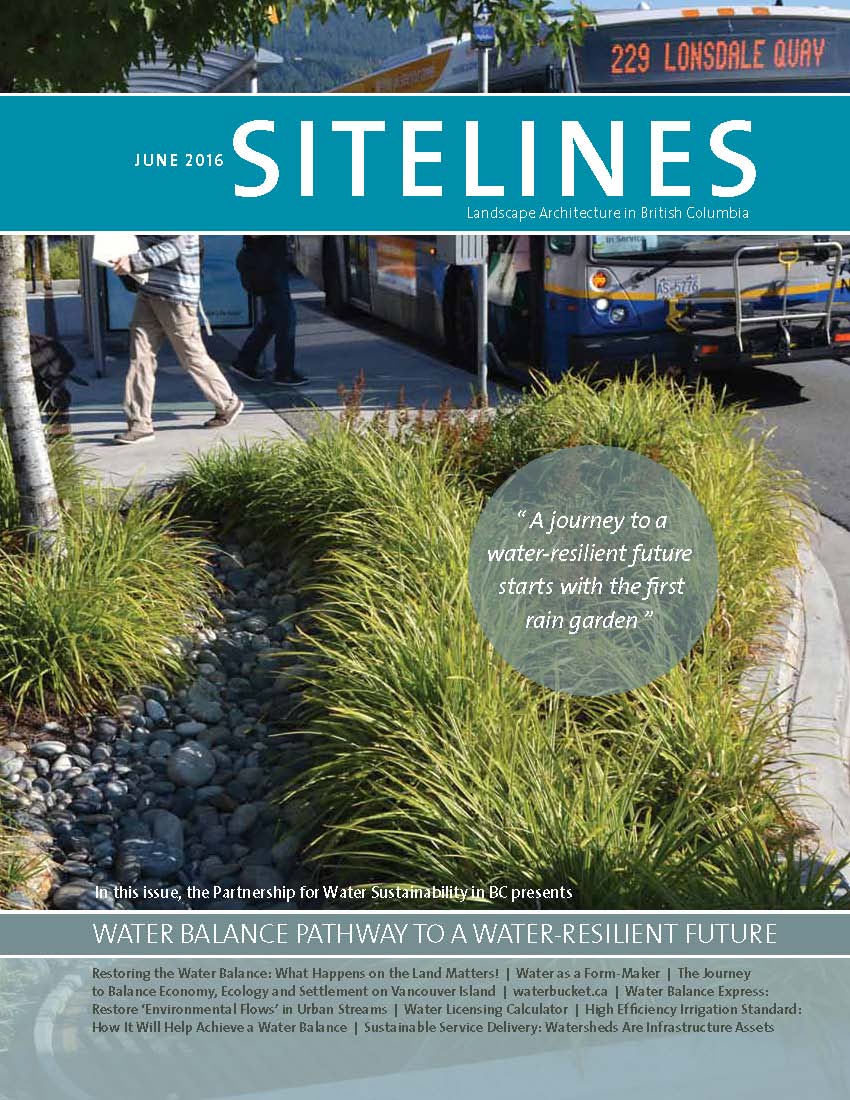Restoring the Water Balance: What Happens on the Land Matters!
Water Sustainability Act is already influencing water management in British Columbia
Sitelines magazine is a publication of the British Columbia Society of Landscape Architects (BCSLA). The Partnership for Water Sustainability tells its’ story in the June 2016 issue.
Nine articles showcase the breadth of program elements delivered by the Partnership under the umbrella of the Water Sustainability Action Plan for BC. In 2016, the Partnership delivered the keynote address at the BCSLA Annual Conference and gave examples of How the Water Sustainability Act is Already Influencing Water Management in British Columbia.
The Partnership is the hub for a “convening for action” network. Through the Georgia Basin Inter-Regional Education Initiative, the Partnership plays a bridging role between Province, local government and community.
To Learn More:
DOWNLOAD THE JUNE 2016 ISSUE OF SITELINES MAGAZINE
Click on link to KEYNOTE ADDRESS: How the Water Sustainability Act is Already Influencing Water Management in British Columbia
Water Sustainability Act is a Game-Changer
Effective as of 2015, the Water Sustainability Act is the signature piece in a provincial policy, program and regulatory framework that establishes expectations for adapting to a changing climate by striving to build greener communities, and choosing to live water smart.
The Act recognizes the connection between land use actions and the implications for both the water cycle and watershed sustainability.
The Act will have widespread impacts on how water and land practitioners conduct their work. It results in a new opportunity and framework to collaborate.
 “A desired outcome in writing the articles was that they would stimulate conversations among landscape architects, and others, about the roles they can play within a Whole Systems approach to restoring the Water Balance of watersheds in urban areas,” stated Kim Stephens, Partnership Executive Director.
“A desired outcome in writing the articles was that they would stimulate conversations among landscape architects, and others, about the roles they can play within a Whole Systems approach to restoring the Water Balance of watersheds in urban areas,” stated Kim Stephens, Partnership Executive Director.
Water as a Form-Maker:
 “The set of articles introduces readers to concepts such as ‘water as a form-maker’. This means watersheds are defining landscapes,” added Tim Pringle, Partnership Past-President and currently Chair, Ecological Accounting Protocol.
“The set of articles introduces readers to concepts such as ‘water as a form-maker’. This means watersheds are defining landscapes,” added Tim Pringle, Partnership Past-President and currently Chair, Ecological Accounting Protocol.
“In many ways, the built environment has to adapt to watershed features and water movements to maintain viable settlements.”



